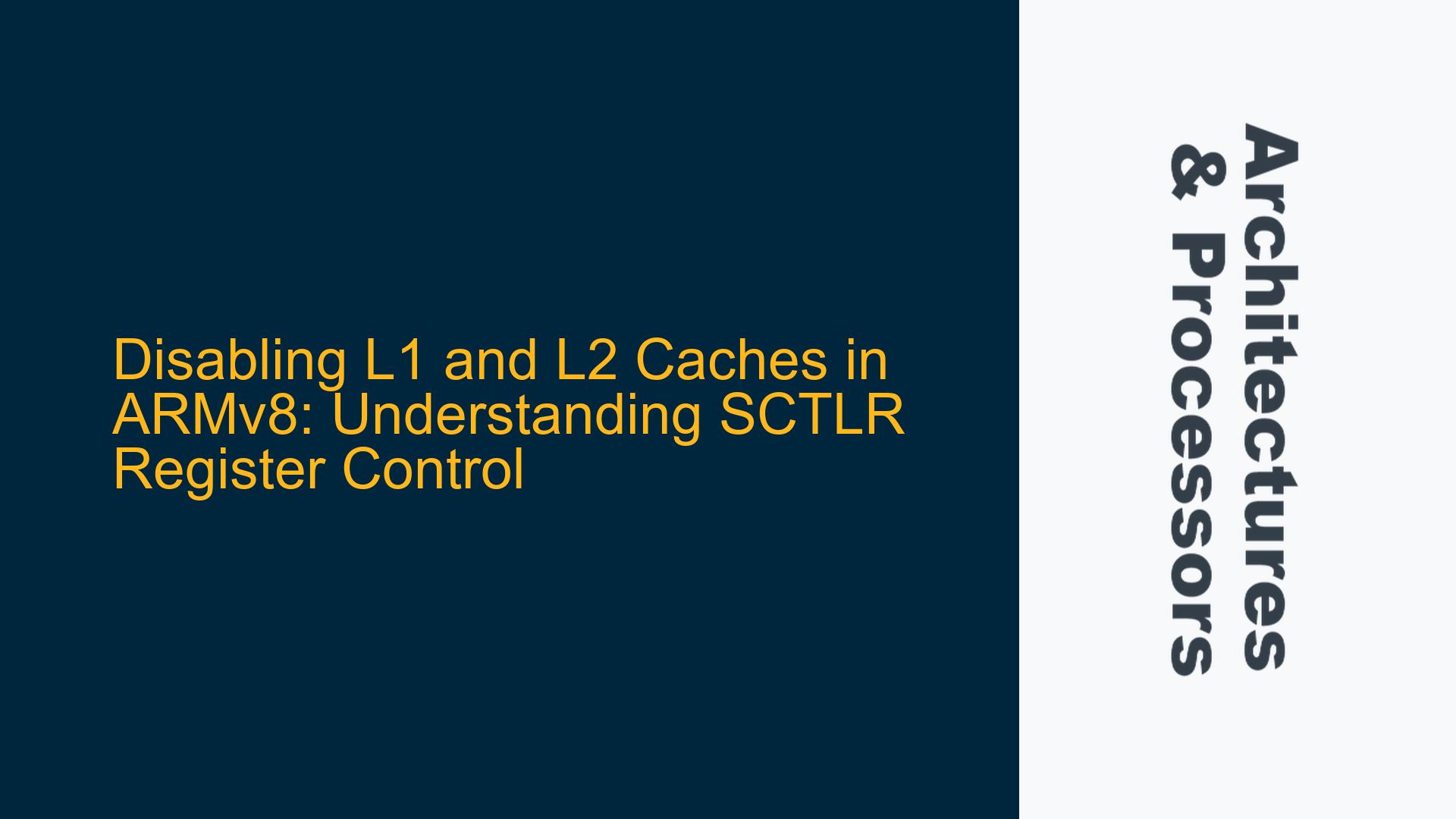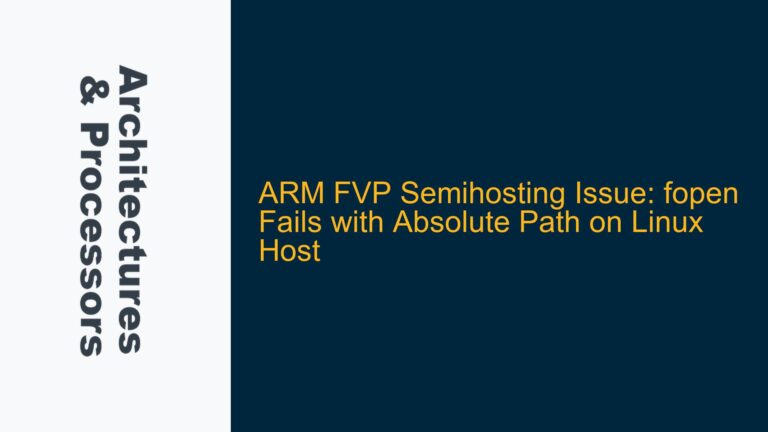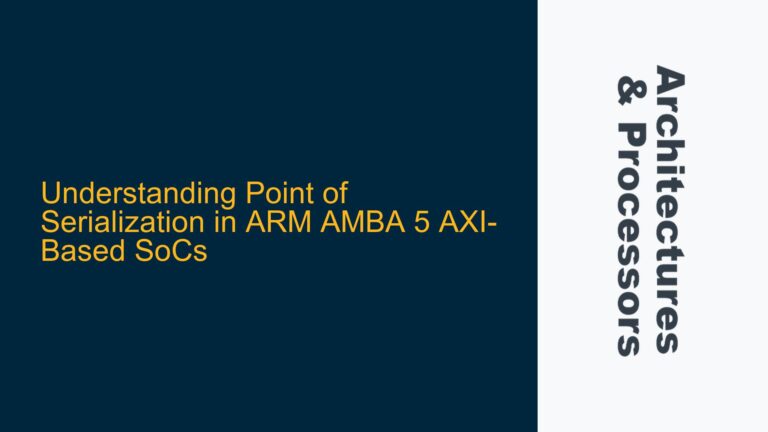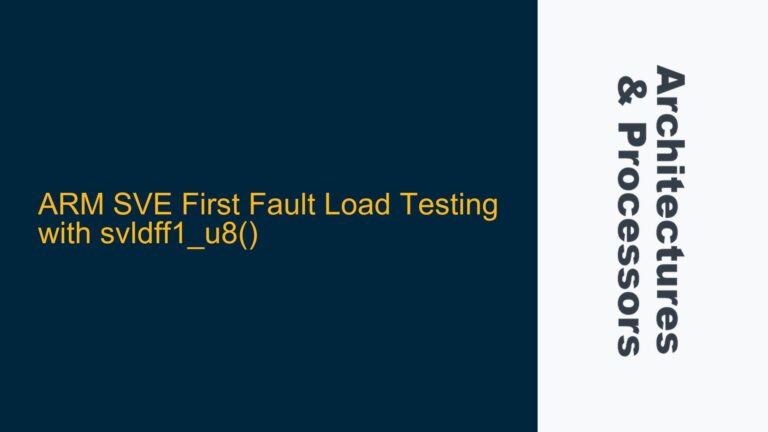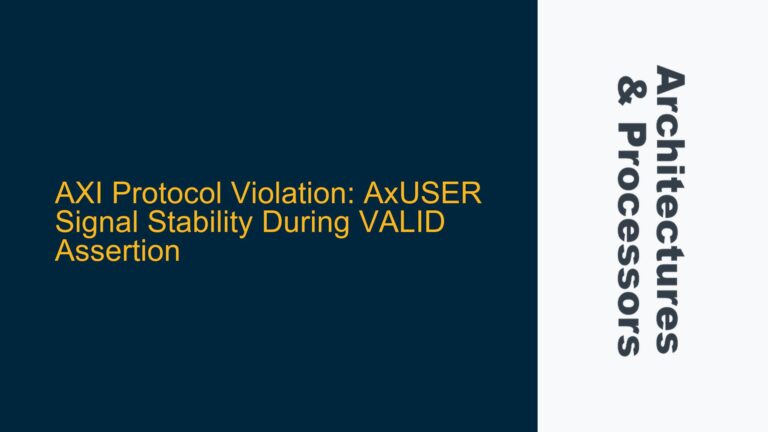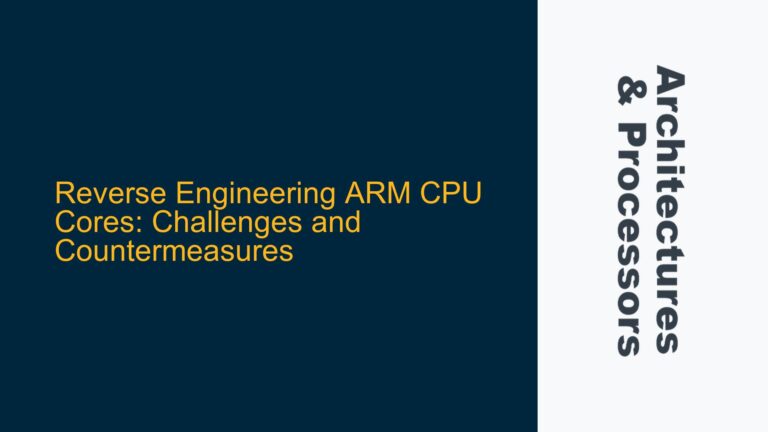ARMv8 Cache Architecture and SCTLR Register Overview
The ARMv8 architecture incorporates a sophisticated cache hierarchy designed to optimize performance by reducing memory access latency. The cache system typically includes Level 1 (L1) and Level 2 (L2) caches, with L1 further divided into instruction (L1 I-cache) and data (L1 D-cache) caches. The L2 cache is usually unified, meaning it stores both instructions and data. The System Control Register (SCTLR) plays a pivotal role in managing these caches, particularly through its C and I bits.
The SCTLR register is a critical component in the ARMv8 architecture, responsible for controlling various system behaviors, including cache enablement and disablement. The C bit in the SCTLR register controls the data cache, while the I bit controls the instruction cache. Understanding the interplay between these bits is essential for effectively managing cache operations.
When the C bit is set to 0, the data cache is disabled across all levels, including both L1 D-cache and L2 cache. Conversely, setting the C bit to 1 enables the data cache. Similarly, the I bit controls the L1 I-cache; setting it to 0 disables the instruction cache, while setting it to 1 enables it. The L2 cache, being unified, is influenced by the C bit, as it stores both data and instructions. Therefore, disabling the C bit effectively disables the L2 cache as well.
Cache Disablement Challenges and Misconfigurations
One of the primary challenges in disabling caches in ARMv8 systems stems from the intricate relationship between the C and I bits in the SCTLR register. A common misconception is that the L1 D-cache can be disabled independently of the L2 cache. However, due to the unified nature of the L2 cache, disabling the C bit affects both the L1 D-cache and the L2 cache. This interdependency can lead to unintended system behaviors if not properly understood and managed.
Another potential issue arises from the timing of cache disablement. Disabling caches during system operation without proper synchronization can result in data inconsistency and system instability. For instance, if the C bit is cleared while data is still being written to or read from the cache, the system may encounter data corruption or incorrect execution paths. Therefore, it is crucial to ensure that all cache operations are properly synchronized before disabling the caches.
Furthermore, the ARMv8 architecture does not provide a direct mechanism to disable only the L1 D-cache while keeping the L2 cache enabled. This limitation can be problematic in scenarios where fine-grained control over cache operations is required. For example, in certain debugging or performance analysis tasks, it may be desirable to disable only the L1 D-cache without affecting the L2 cache. However, the current architecture does not support this configuration, necessitating alternative approaches to achieve the desired outcome.
Implementing Cache Disablement and Ensuring System Stability
To disable the L1 and L2 caches in an ARMv8 system, the following steps should be taken to ensure proper operation and system stability:
-
Cache Flush and Invalidation: Before disabling the caches, it is essential to flush and invalidate the cache contents to ensure data consistency. Flushing the cache writes any modified data back to main memory, while invalidation removes stale data from the cache. This step is critical to prevent data corruption and ensure that the system operates correctly after cache disablement.
-
Disabling the C and I Bits: Once the cache contents have been flushed and invalidated, the C and I bits in the SCTLR register can be cleared to disable the caches. Clearing the C bit (setting it to 0) disables both the L1 D-cache and the L2 cache, while clearing the I bit (setting it to 0) disables the L1 I-cache. It is important to note that these operations should be performed with interrupts disabled to prevent any concurrent cache access that could lead to inconsistent states.
-
Memory Synchronization Barriers: After modifying the SCTLR register, it is necessary to insert memory synchronization barriers to ensure that all subsequent memory operations observe the new cache configuration. The Data Synchronization Barrier (DSB) and Instruction Synchronization Barrier (ISB) instructions should be used to enforce the correct ordering of memory accesses and instruction fetches.
-
System Reinitialization: In some cases, disabling the caches may require reinitializing certain system components to adapt to the new cache configuration. This may include reconfiguring memory controllers, updating page tables, or adjusting performance monitoring settings. Proper reinitialization ensures that the system continues to operate reliably with the caches disabled.
-
Testing and Validation: After disabling the caches, thorough testing and validation should be performed to verify that the system operates as expected. This includes checking for data consistency, performance metrics, and system stability under various workloads. Any anomalies or unexpected behaviors should be investigated and addressed promptly.
By following these steps, system designers and developers can effectively disable the L1 and L2 caches in ARMv8 systems while maintaining data integrity and system stability. Understanding the nuances of the SCTLR register and the cache architecture is essential for successful cache management and optimization in ARMv8-based systems.
Advanced Considerations and Best Practices
While the above steps provide a foundational approach to disabling caches in ARMv8 systems, there are several advanced considerations and best practices that can further enhance system performance and reliability:
-
Partial Cache Disablement: In scenarios where complete cache disablement is not desirable, partial cache disablement techniques can be employed. For example, specific cache lines or regions can be marked as non-cacheable using memory attributes in the page tables. This approach allows for selective disablement of cache operations for specific memory regions while keeping the rest of the cache hierarchy active.
-
Cache Partitioning: ARMv8 architectures often support cache partitioning, where the cache can be divided into multiple partitions, each serving different purposes or applications. By leveraging cache partitioning, system designers can isolate cache operations for critical tasks, ensuring that they are not affected by cache disablement or other cache management operations.
-
Performance Monitoring: Disabling caches can have a significant impact on system performance. Therefore, it is crucial to monitor performance metrics before and after cache disablement to assess the impact and make informed decisions. ARMv8 processors provide performance monitoring units (PMUs) that can be used to track cache hits, misses, and other relevant metrics.
-
Debugging and Diagnostics: Cache disablement can complicate debugging and diagnostics, as the absence of caches may alter system behavior and timing. To mitigate this, ARMv8 systems often include debugging features such as trace buffers and watchpoints that can be used to monitor system activity even with caches disabled. Leveraging these features can aid in identifying and resolving issues that arise from cache disablement.
-
Firmware and Software Optimization: In systems where caches are disabled, firmware and software optimizations become even more critical. Techniques such as loop unrolling, data prefetching, and efficient memory access patterns can help mitigate the performance impact of cache disablement. Additionally, optimizing the placement of critical data structures in memory can reduce the reliance on caches and improve overall system performance.
By incorporating these advanced considerations and best practices, system designers can achieve a more nuanced and effective approach to cache management in ARMv8 systems. Whether the goal is to disable caches for debugging, performance analysis, or specific application requirements, a thorough understanding of the cache architecture and careful implementation of cache management techniques are essential for success.
Conclusion
Disabling the L1 and L2 caches in ARMv8 systems is a complex task that requires a deep understanding of the cache architecture and the SCTLR register. The interdependency between the C and I bits, the unified nature of the L2 cache, and the potential for data inconsistency during cache disablement all contribute to the challenges faced by system designers and developers.
By following a structured approach that includes cache flushing and invalidation, proper manipulation of the SCTLR register, memory synchronization barriers, system reinitialization, and thorough testing, it is possible to disable the caches while maintaining system stability and data integrity. Additionally, advanced considerations such as partial cache disablement, cache partitioning, performance monitoring, debugging features, and firmware optimization can further enhance the effectiveness of cache management strategies.
Ultimately, successful cache disablement in ARMv8 systems hinges on a comprehensive understanding of the underlying architecture and a meticulous approach to implementation. By adhering to best practices and leveraging the advanced features of the ARMv8 architecture, system designers can achieve the desired cache configuration while ensuring optimal system performance and reliability.
